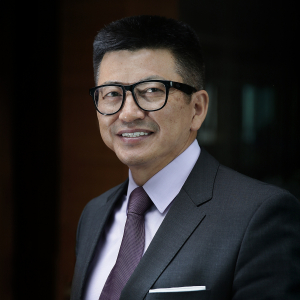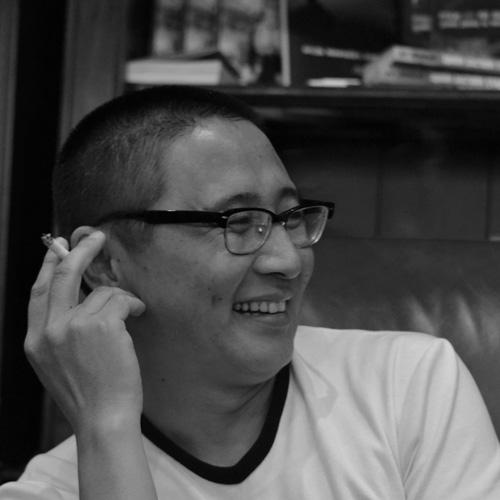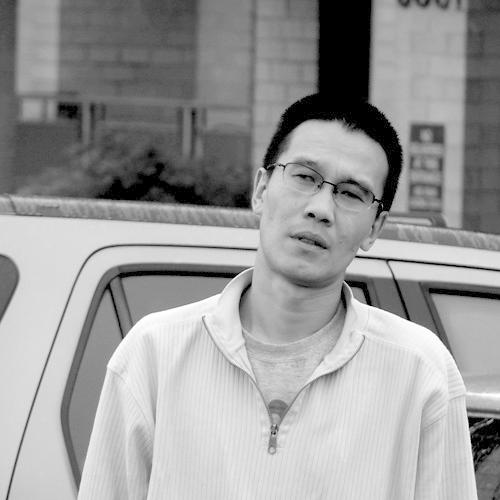OVERVIEW OF MONGOLIA’S SOCIAL AND ECONOMIC DEVELOPMENT FOR 1991 TO 2021
During the 50 years between 1940 to 1990 Mongolia’s economy grew 10,4 times while for the 24 years period between 1990 to 2014 it saw the growth of 20 folds. While for the period of 1990 to 2004 the economy doubled for 2004 to 2014 it grew about 10 times.
OVERVIEW OF MONGOLIA’S SOCIAL AND
ECONOMIC DEVELOPMENT FOR 1991 TO 2021
In accordance with the prevailing contemporary definition in philosophy development is understood as forward driven progressive movement of both matter and consciousness from simple to complicated or from primitive low state to sophisticated highly organized system. Although certain schools of philosophy do not agree with this definition the concept is widely accepted.
At present researchers and scholars define three following categories of human development:
- Material development
Body development (strength, endurance, growth and etc.,)
Technical development (agriculture, industry, information and etc.,)
Financial development (personal, household, cooperative, state, public and etc.,)
2. Spiritual development (spiritual thinking, spiritiual satisfaction, self expression and etc.,)
3.Moral development (Morality and etc.,)
4.Societal development (social status, hierarchy)
This overview of Mongolia’s development is being made based on official statistics for the last 30 years. Compilations of Statistical office of the MPR (Mongolian People’s Republic) for 1971, 1981, 1986 and 1991; detailed reports on population and housing census for 2010; Mongolbank annual reports; annual reports of International Monetary Fund, World Bank and Asian Development Bank have been used in this presentation
Human rights and Freedom.
Freedom of expression, freedom of publication, right to assembly, freedom of worship, right to freely elect Government based on one’s own believes, right to travel freely were incorporated in the New Constitution. Currently there are nearly 23 thousand NGOs or citizens’ free associations work in Mongolia. Prior to 1990 there was not a single independent organization permitted by the authorities in the country. While in 1990 there were around 10 state owned newspapers and magazines at present there are nearly 600 printed media registered with the Supreme Court. There are about 20 private daily newspapers, 40 radio stations, hundreds of TV broadcast channels in Mongolian including independent local TV channels in each soum (village centers).
As citizens were granted the right to freely choose their place of abode Ulaanbaatar’s population grew from 520 thousand to 1 million 400 thousand and the cities of Darkhan and Erdenet each has the population of 80-100 thousand people. On top of this, about 4% of Mongolia’s population are residing abroad. 15 thousand foreigners and stateless people equal to roughly 0,5% of Mongolia’s population live in the country. While less than 1000 international tourists visited Mongolia prior to 1990 at present more than 50 thousand tourists come to Mongolia annually. About 1 million Mongolians travel internationally for tourism, business and education and etc.,
Before 1990 there were no official statistics on believers and it was taken granted that in general there were no believers in the country. According to an international estimate conducted in 2005 Buddhists constituted 15% of the population while Christians and Muslims were 4% and 2% accordingly. All other political parties except MPRP (Mongolian People’s Revolutionary Party) were banned in the past in contrast to 37 political parties currently registered in the country.
Macro economy.
During the 50 years between 1940 to 1990 Mongolia’s economy grew 10,4 times while for the 24 years period between 1990 to 2014 it saw the growth of 20 folds. While for the period of 1990 to 2004 the economy doubled for 2004 to 2014 it grew about 10 times. While the USSR used to provide 70% of the national budget and investments in the past that of donors and international financial community constituted up to 40% in 1999 . Since 2005 Mongolia’s budget revenue has become selfsustained 100%.
In 1940 42% of the state budget revenue was collected from private sector which had been liquidated by 1960 to come into being again making 80% by year 2000. The overall state budget being about $250 million in 1995 expanded to more than $4 billion by 2010. In 2005 Mongolia graduated from poor country rankings and became not eligible for a number of IMF programs. The per capita GDP which was about $400 in 1995 is estimated to reached about $5000 and being ranked as middle income economy.
There were times when unemployment officially did not exist and being unemployed was considered as crime. As forced labor became illegal and unemployment is now recognized its rate has been floating 5-7% while hundreds and thousands of jobs remain vacant. The minimum salary (not counting 60-80 tugriks for herdsman per month) which was 160 tugriks per month now has reached 300 thousand per month. In terms of purchasing power the latter has doubled at least. Let’s look at a simple example. 20-25 kg of meat used to cost 160 tugriks. The purchasing power has not diminished. This can be demonstrated using various techniques.
The livestock population has not reached 25 million before 1990 except 1943 which saw 27 million heads. However, by 2014 the number of livestock reached 59,2 million including young livestock and currently it is nearing 70 million. Although the livestock population has tripled its share in the GDP has shrunk three folds.
The total length of paved roads which was 1184 km in 1990 now reached 7000 km. The total imports have reached 8 folds while exports expanded by 7 folds.
In 1990 there was no tier one bank system while there are 17 commercial banks in operation at present. Although the half of business entities do not pay taxes there are nearly 100,000 of them in existence now.
Health care.
In 1990 the country’s population stood at 2,2 million and by 2020 it reached 3,4 million. During the last 25 years the average life expectancy has increased by 7 years. Currently female life expectancy is 76 years while that of male is 68 years. In 1990 infant mortality rate for newborns up to one year being 128 per thousand which was considered too high by the authorities so the actual reported number to the World Health Organization was 64. At the present the number is 16 per thousand or has decreased by 7 folds. The death rate decreased from 10,4 per thousand decreased to 5,6 per thousand. In contemporary Mongolia there are 16 thousand deaths annually against 80 thousand live births.
In 1992 the health care expenditure totaled US$10 million compared to US$500 million in 2011. According to WHO the HIV spread rate of below 0,01 is considered to be safe one and that rate is 0.0007 in Mongolia.
Education.
Mongolia used to have 7 universities and 16 thousand students. Currently the country has about 100 higher education entities and 200 thousand students including those studying abroad. The education expenditure makes up about 20% of the state budget which represents 10 folds increase in real terms for the past 25 years. The number of university students reached 600 per 10,000 inhabitants placing the country on the highest rank in the world. In 1990 there were 100,000 graduates from higher education establishments and now the figure is near 400,000 out of which 62% are female.
Ten years schooling system has been transformed into that of 12 years making it comparable to international standard. Currently most rural schools have been transformed into 12 years of schooling. The rate of school dropout is 0,8% relative to total number of schoolers. Public school students are provided with free lunch and state owned kindergartens are free of charge that is unprecedented.
Housing.
Traditional and modern dwellings suitable for living under certain climate zones are considered housing by international definition. In accordance with 2010 census 99% out of 713 thousand households live in dwellings ranking the country high enough by worldwide comparison. 322,000 households live in traditional dwelling or ghers and 382,000 households live in buildings while 8,000 households live unsuitable dwellings constituting 1% of the total households. 1700 households live in student dormitories making up 0,2% and 10,300 households live in employee dormitories making up 1,5% of the total households accordingly. There were no such detailed data prior to 1990. 3,3% of households live with no electric power; 15,6% of households have renewable energy and 76,6% of households are connected to central power grid. 82% of households have fewer than 5 members.
Food consumption.
At present daily food consumption for an average Mongolian is 2800 kilocalories exceeding that of Japan, for instance, against less than 2000 kilocalories prior to 1990. Currently an average Mongolian consumes 150 kg of meat whereas the 1985 Food program aimed to provide 88 kg of meat per person. If the per capita meat consumption is converted to domestic industrially processed boneless meat then the figure would be around 100 kg not including the meat produced for individual consumption by private households.
Mongolia’s per capita meat consumption would rank even higher globally if meat derivatives, imported pork, fish, chicken, other meat products and canned meat are added to this calculation. Per capita flour consumption remains about the same however prior to 1990 2nd grade flour constituted 80% of consumption against the same share of 1st grade flour at present. Food products make up the majority of nearly 60 thousand imported items.
Not only the variety of food items has expanded but their quality also has improved increasing vitamin intake and impacting the younger generations’ height and weight although no data are available on such research. Due to unhealthy food consumption obesity and overweight have reached 63% of those who are 35 years and older.
Household consumption.
In 1990 there were 3300 vehicles in Ulaanbaatar out of which 100 were private cars. At present the number of private vehicles has far exceeded that of households. There are one million vehicles or one for every three persons. The number of mobile phones has also exceeded that of the population having reached 4 million 300 thousand by multiple counts. The number of smart phone users constitute the majority of them.
The amount of bank cards in use has also exceeded the population number. About one million 600 thousand computers are connected to internet. All households have TV sets. Since 2006 the Mongolians have spent US$7 billion for vehicles, US$2 billion for mobile phones and US$1 billion for TVs mostly for flat screen ones.
Income.
Prior to 1990 agriculture including livestock provided the prevailing share for state budget revenue. Currently this share is less than 30% and about 15% of the population is engaged in pastoral livestock breeding. The livestock were public property owned by so called cooperatives and average monthly income for their members was less than 100 tugriks or US$3 to 5 under current exchange rate.
This calculation is based on then existing exchange rate of US$1 to 20 tugriks. The purchasing power of tugrik when the economy was closed has not been taken into consideration here. The lowest paid state employees like cleaners and guards were paid 160 tugriks a month which is equal to 3 kg of so-called bear candies (a popular brand of candy with bear description). The average salary of teachers and doctors were equal to the value of 40 to 50 kg of meat. This value measured by meat has not been diminished not to mention any progress or “development”. The availability and quality are completely different subject given the stark difference of the two societies.
Due to rapid increase of commodities’ prices since 2004 economic output has increased dramatically. Various social benefits valued at nearly US$ 4 billion disguised under different labels have been distributed in cash within less than 10 years. These include monthly child credit, old age, newlywed, student payment and etc ., distributed without discrimination. On top of this variety of targeted subsidies of billions of tugriks for certain social groups, professions and sectors were provided for goat breeding, farming, dairy production, small and medium enterprise.
Here I am not in support of cash payments from which the general population and household income benefited rather I wish to underline those large scale fraud, theft and corruption that have taken place.
It is a bit challenging to determine a straight forward poverty level due to its various dimensions. There was no such research before 1990. It is not clear what and how a starting reference point should be determined. If one applies the UN criteria of measuring poverty as one dollar per person a day there is no poverty in Mongolia. However, if one applies the measurement package developed by the National Statistics office the poverty is about 20%. Under the World Bank methodology involving a reference point followed by several consequent years of measurement the poverty in Mongolia stands at around 10%. It also depends a lot on in what units it is measured. GDP in US$ is one measurement while PPP or purchasing power poverty measure produces fairly different result.
The most of intellectuals would agree with all these statistics but they would argue that “it could have been better”. This is rather true conclusion. Most people blame the Government but this is also half true. In a democratic Mongolia Government has been elected through free and fair elections for last 30 years. The Mongolian State and its leaders are the perceptions of the Mongolian people, the direct reflection and the downsized mirror of their thinking.
Populism has become the biggest tragedy for Mongolia in the last 20 years. It is not much different in other parts of the globe. Populism not only slows down the pace of development it destroys great opportunities and even drives back progress. There are plenty of examples of this around the world. Developing countries mostly rely on foreign investment in their development pursuit. They lack not only their own capital but badly needed management and marketing experience that are brought in by international investors who keenly follow which sectors of these countries that may become lucrative.
As Mongolia become richer in early 21st century populism served as upset stomach by calling to oust international investors. In the nation whose economy has nothing to offer except mining there are insane talks of rainbowing (diversification) of the economy. All of these are leading to the halted economic development and material growth.
The majority of the population is guided by populism and ignore or do not accept the importance of the simple truth known even for children that any nation like a household produces goods and services demanded by markets and accumulate capital which is used later on to develop other sectors of the economy. Nobody even wants to listen to such obvious facts as multiplier effect of foreign investments that can be calculated by elementary school students.
At present Mongolia does not have any single product competitive enough in global markets except minerals. One can look into cashmere, tourism, sheep tail soap, salt, labor force for export etc., however their share in the US$13 billion economy is hardly to be noticed. The Oyutolgoi mine stocks which peaked to US$ 30 per share now is valued at US$ 1,5 and these are the stock of a company whose contribution constitute one third of Mongolia’s budget revenue according to Mongolbank and Finance Ministry estimates. Merely reflecting at these numbers makes me think that at least another 10 years are required to bring back the foreign investment under the conditions of tireless good governance efforts.
Since 1990 on and for 15 good years Mongolia’s Presidents, prime ministers, their deputies have called, invited and begged foreign investors to invest in the country on over 200 occasions. Thanks to all these efforts and time spend only since 2004 serious foreign investors have showed up in the country. Under the present atmosphere of militant populism dominating in the country it is highly questionable that the 20 year old rhetoric of “halted, gridlocked or downhill development” would realistically revive foreign investment for the next 10 years.
Democracy is an opportunity but not a heaven in its direct meaning. It is not a soup kitchen by charity organizations, nor a free medical take care station and not a retired living home. The source of development is bringing the capital into potentially promising sectors. Democracy itself, pseudo democracy or empty praises for being “an island of democracy” are not the source of material development. The US has the biggest foreign investment followed by China something that make them giants. I do not think China is considered democratic by the way.
2021.11.30







